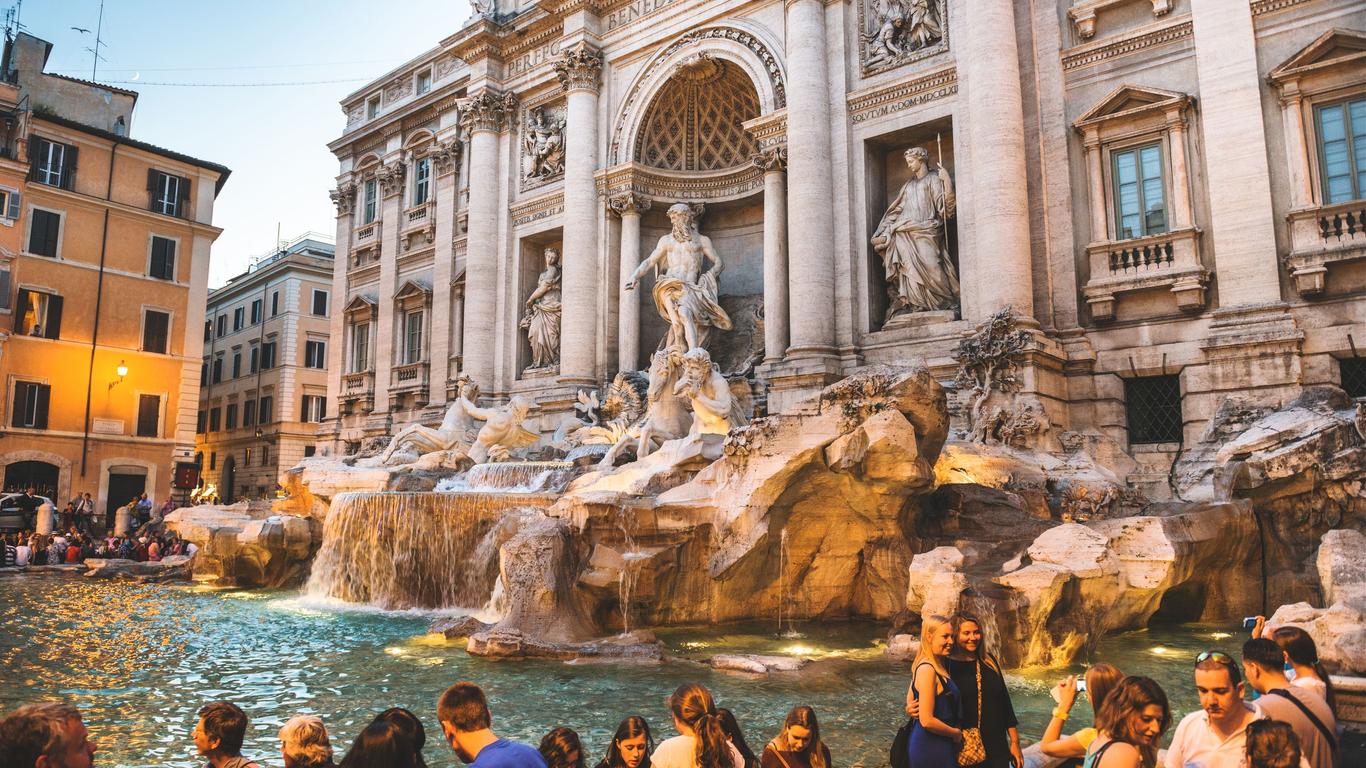The Trevi Fountain ,or “Fontana di Trevi”, as it is known in Rome is the largest Baroque designed fountain in the world and one of the most beautiful. If visitors throw a coin over their shoulder into the fountain, legend says that they will always return to Rome. It is an extraordinary piece of artwork located in the centre of Rome, attracting millions of visitors each year who come to admire the spectacular sculptures and architecture.
The fountain itself is 26.30 metres in height and every day 80,000 cubic metres of water flows through it. The Trevi fountain is constructed from carrara marble with a travertine façade, which is carved from stone quarried 35 kilometres east of Rome. Pietro Bracci’s “Oceanus” sculpture stands majestically at centre stage where he is carried across the water on his chariot flanked by two Tritons. The statues of “Abundance” and “Health” sit at either side of him. There are four more allegorical statues on the attic, representing the four major producers that rely on water supplies in Rome. In addition to the detailed reliefs and statues, there are several other notable buildings of interest close to the Trevi Fountain. Poli Palace is showcased in the fountain background, a house that belonged to the Conti Family and is now the National Institute of Graphical Art. The Church of SS Vincent and Anastasius dates back to 1650 and faces the fountain. Originally used as a public laundry by city folk, the bustling street of Via del Lavatore leads to the fountain is now lined with Italian tavernas and gift shops.
There are many bus and metro routes transporting visitors to the tourist sites of Rome. Several buses stop close to the Trevi Fountain, Piazza Navona, the Pantheon, and the Spanish Steps. It is also easy to walk between these attractions in around 10 to 15 minutes. City metro stations of Barberini and Piazza di Spagna are also a short walk away.
The fountain is located at the original junction of “Tre Vie’ which were the terminal points of aqueducts housing the water supply for ancient Rome. During the Baroque era, competitions were held to source architects who could design and construct buildings in the city. Pope Clement organised a contest to find the most talented designer to create a fountain and focal point in central Rome. It was eventually awarded to local architect Nicola Salvi, who designed the majority of the structure. Pietro Bracci’s famous “Oceanus” sculpture was added in 1762. Visitors from all over the world visit the Trevi Fountain, each tossing a coin into the waters, hoping one day they will return to the “Eternal City”.





